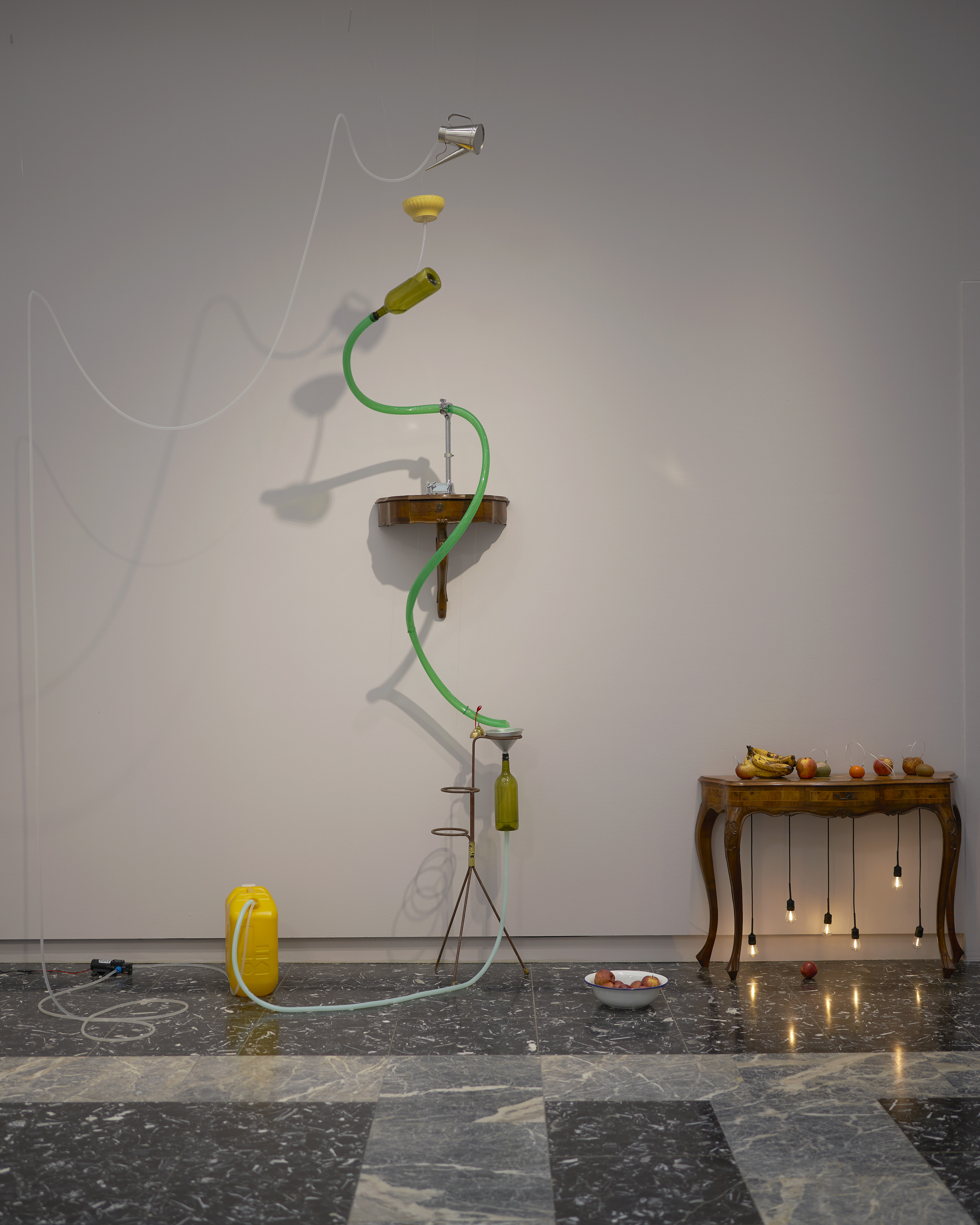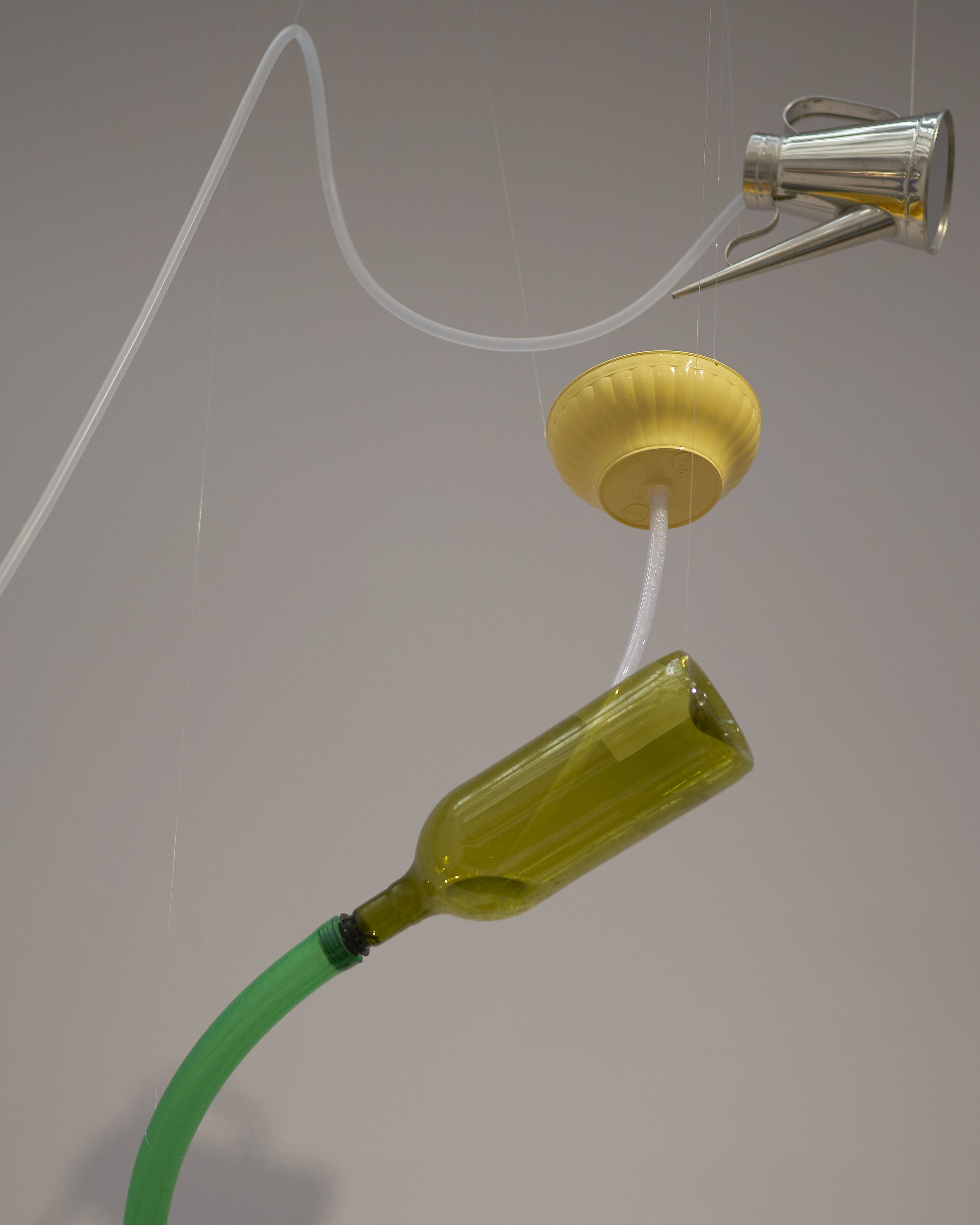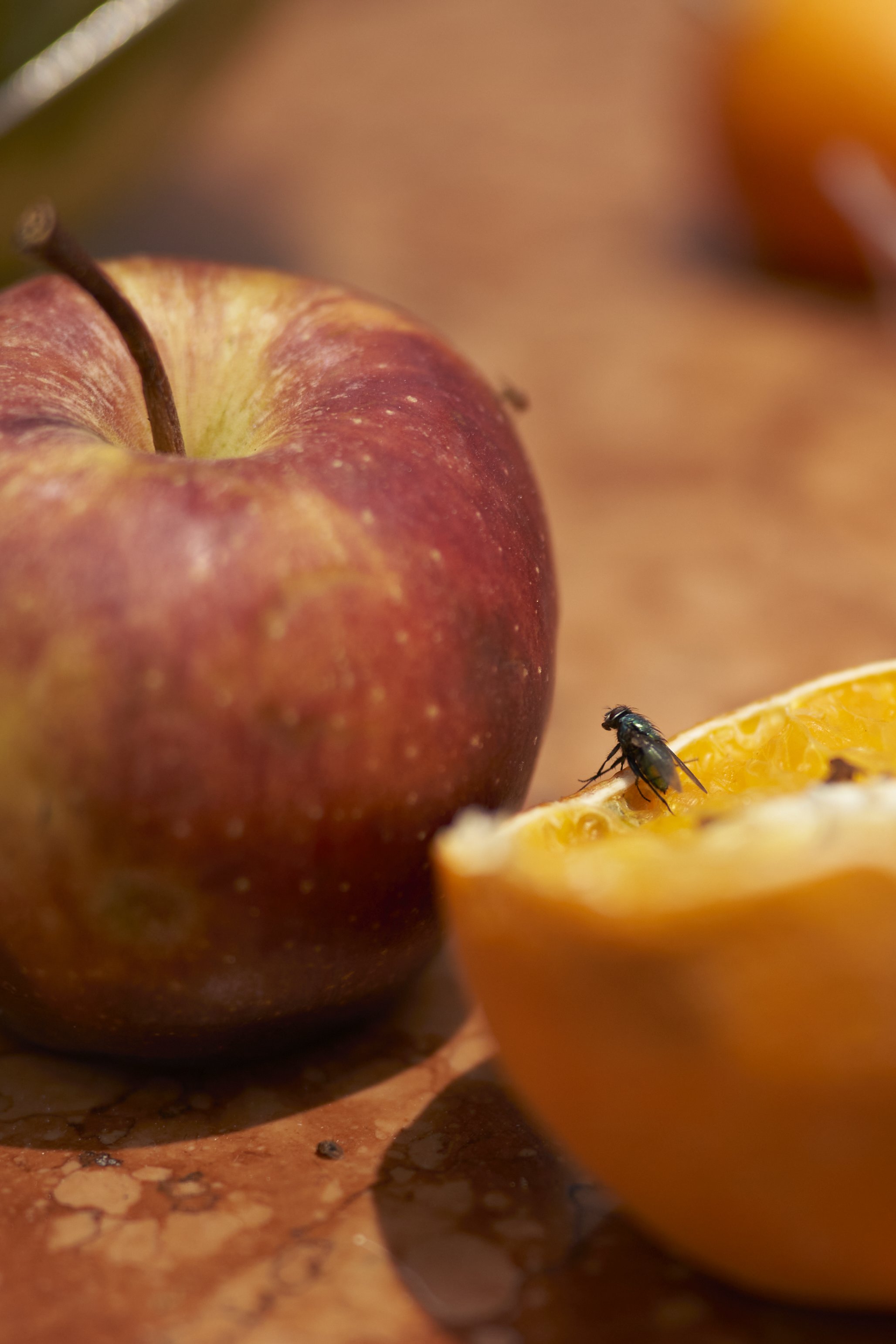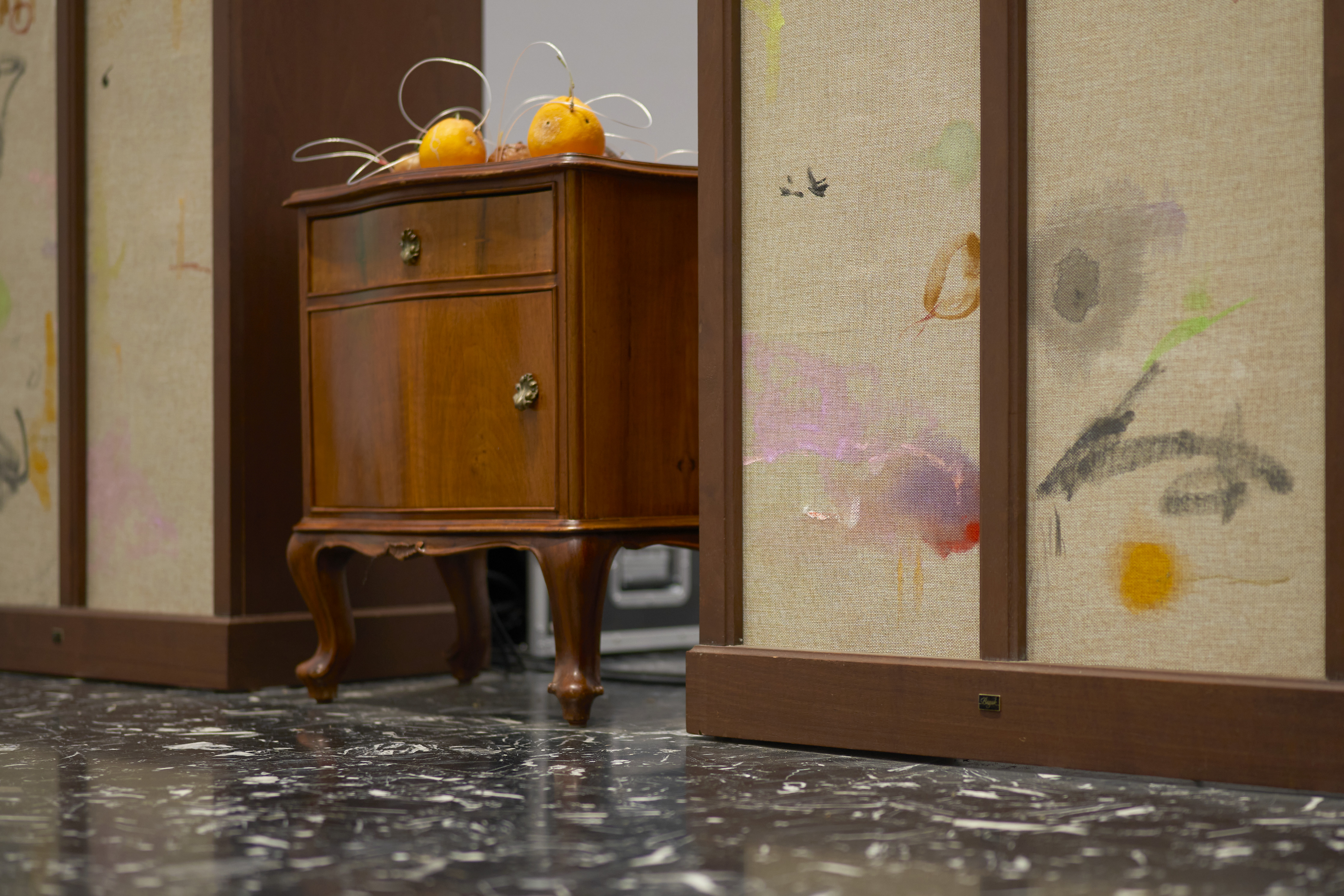Yuko Mohri and Sook-Kyung Lee Discuss Japan Pavilion at the 60th Venice Biennale
Sook-Kyung Lee (left) and Yuko Mohri (right) in front of the Japan Pavilion Photo by kugeyasuhide
The 60th Venice Biennale runs from April 20 through November 24 at the Giardini and Arsenale venues.
The Japan Pavilion features Compose by contemporary artist Yuko Mohri, curated by Sook-Kyung Lee (Director, The Whitworth, The University of Manchester, UK). This is the first time in history that a foreign curator has overseen the Japan Pavilion.
On this memorable occasion, we invited art critic Ryo Sawayama to interview the pair during the press preview on April 17. What is the connection between Yuko Mohri and the city of Venice? What are the difficulties of working with water as a medium? And how was the sisterhood born?【Tokyo Art Beat】

Find more information about the exhibition in the photo report.
In conversation with Takamasa Yoshizaka's architecture
——Thank you for your time today. To begin, tell us about the structure of this exhibition.
Sook-Kyung: The first thing we discussed with Yuko was the architecture of the Japan Pavilion and how to use Takamasa Yoshizaka's architecture rather than fight against it. It's an old building with a fascinating history and unusual features - holes in the ceiling and the floor. From the beginning, Yuko sought ways to incorporate these features into her work and link them to substances like water. She sought to explore the possibilities of her work with a strong interest in this architecture.

——The distinctive structure of the Japan Pavilion is related to Takamasa Yoshisaka's idea of "dis-continuous continuity." I think Yuko's work also connects to this unique idea.
Sook-Kyung: I agree. The building's structure blurs the division between the outside and the inside, which also relates to the question of what architecture is and what nature is. This is a key similarity with Yuko's work. What Yoshisaka envisioned in the late 1950s became relevant again, and for younger-generation artists like Yuko, the question of incorporating nature has become an important issue.

Elusive material of water
——Your work uses water, but water as a material is also closely linked to Venice. The city has experienced many floods and is home to many wells. How do you see the relationship between water and Venice?
Yuko: When I was invited to exhibit in Venice, the first thing that came to my mind was flooding. The floods in Venice left a strong impression on me when I saw them on the news, and perhaps it is too simple, but water has always been a material that interests me. As with most of my projects, the challenge was to figure out how to create a work of art by including unstable materials.
My first opportunity to work with Sook-Kyung was at the 14th Gwangju Biennale, where she served as artistic director. She chose the theme "soft and weak like water," derived from Lao Tzu's words. The biennale brought together different artists exploring and working with water, and we had many discussions. It was interesting to discover that people from different countries and backgrounds also think differently about materials.
I jokingly mentioned to Sook-Kyung that artwork with unstable elements doesn't resonate well with European audiences, but I think this is true. This is why I wanted to discuss unstable elements like water with Sook-Kyung a little further.

——What ideas have you been discussing?
Yuko: Sook-Kyung has been working in Europe for over 20 years and mentioned that it is still challenging to express unstable elements, such as water, even in contemporary art.
I gained a lot of inspiration from Nam June Paik's exhibition, which she curated at the Tate Modern. He worked with performance and action but also with unstable elements. Therefore, we found common ground, and I could discuss with Sook-Kyung why expressing unstable materials is complicated and exciting.
Sook-Kyung: I asked Yuko why she was interested in working with me, and she said that, unlike other biennials she participated in, the Gwangju Biennale was particularly interesting because it had me as the artistic director. I grew up in Korea but am currently working in Europe, and I have always considered my traditions and background in a foreign context. She understood how I tried to incorporate my educational and cultural background into the Gwangju Biennale, and it resonated with her interest in how Eastern philosophy relates to her contemporary practice.
The Venice Biennale is an international venue, and we are here as two people with similar cultural backgrounds who have positive exchanges through art. However, political tensions and other issues remain between Japan and Korea. I was surprised to be invited as a foreign curator, and I felt honored to be part of this transnational project.

Transnational sisterhood
——It is quite innovative for Japan to have two people of different nationalities working together like this. It is also an unprecedented initiative for the Japan Pavilion. Can you tell us more about your connection and sisterhood?
Sook-Kyung: As women, we face many challenges and difficulties navigating the art world. Although the contemporary art world is much less chauvinistic or gender-based, in society at large, women have fewer opportunities and less visibility. They are always, in some way or another, put together to compete. But we didn't want that competition. Instead, we wanted to create a space for women.
Many exhibitions around the Japan Pavilion feature women curators and artists—and that's how open art should be. The Venice Biennale is always an excellent platform to promote specific positive ideas. As collaborators and comrades for this project, we protect and encourage each other to be the best of us.
Yuko: It really is so. My production unfolds day by day, and I don't know the outcome because it changes a little bit every day. That's why I needed a companion like Sook-Kyung, who could share my feelings and experiences and encourage me. Even now, I get nervous, so yesterday morning, I asked myself, "Am I sure? Is this what I wanted it to be?" I felt very anxious, but Sook-Kyung's words reassured me. We don't discuss every aspect of the work in detail. Still, sometimes, it feels like we communicate telepathically because we've already shared many ideas, and it's been a lot of fun so far.
Sook-Kyung: We share many common grounds as creators, art practitioners, and people living in this world. We didn't need that many words to understand each other.
Yuko: This is the first time that a foreign curator has been invited to curate the Japan Pavilion, and as someone who has previously visited the Venice Biennale as a viewer, I have always wondered why only Japanese artists and curators have been chosen to represent the Japan Pavilion. I know that the idea of rotating the Japanese and Korean pavilions was once proposed. Ultimately, it didn't happen, but I think it was an excellent idea.
Sook-Kyung: When Yuko told me about this idea, I thought it was terrific, but I thought I had to be selected as a curator first. Today, we remain friends and have formed a partnership through our work, and this connection will continue for a long time. I hope the Japanese art world will embrace internationality within its systems and power structures and become truly open.

——Similar to inviting the foreign curator and using water, there is a particular intention in your work to introduce different things. I feel like there is something positive and unique about that. Your work also explores the questions of circuits and infrastructure, and water is a material closely connected to those. Can you explain your intentions for this installation in more detail?
Yuko: I developed a strong interest in infrastructure, including electronic circuits. Water also circulates inside buildings and outside, all over the place and beyond our imagination, right?
My work also involves sound, but it is generated through electronic circuits. I'm glad you asked about it. I always fail initially when negotiating with unexpected elements, like a water movement, because I can't control it. But I try and try and try again, and the feedback generally creates a circuit. A circuit is also an electrical concept, but an electric circuit is more than just setting a specific start and goal - it is about creating a circular system. The electrons go through the circuit endlessly to generate electricity; there is no start or goal. Sometimes, people compare my work to a Rube Goldberg machine, but I create it with a different mindset. For me, creating a circuit is very important. It is about using water and electricity, communicating with people, and using invisible elements.

The meaning behind "Compose"
——The circuit connects different things, which means there are a lot of interchanges or electrical resistance. You titled this exhibition Compose—can you explain its meaning?
Yuko: "Compose" refers to the notion of composition, decomposition, and decay in musical compositions and works of art, but the title also etymologically signifies "place together (com+pose)." Simultaneously, to create this installation, I collected materials locally, each with a different background. Then, I placed them together to create a circuit in this specific environment. It is also a straightforward statement about our presence here together as foreigners - about our coexistence. Moreover, it is about observing what is happening and starting a negotiation based on a combination of different things.
——Compose is an installation, but at the same time, it is a large electronic device and a sound instrument, isn't it? Music has always been an essential element of your work, but Compose has no performers. However, in a sense, the fruit is performing as an instrument on its own, right?
Yuko: And water too.
——And water. This idea connects to the issues of "composition" and "compose." There is no human subject; instead, different objects act as subjects in the exhibition's structure. In this work, everything is equally subject and object.
Yuko: Since yesterday, I started using the word "negotiation" to describe the work. Ultimately, the Japan Pavilion project started with negotiations regarding collaborating with others. In fact, for more than half a year, until the end of last December, I spent most of my time negotiating with other people. After the New Year, I had to negotiate with the pavilion's unique architecture and the various objects I found here to create the installation. For example, this process sometimes even involves negotiating with water in a non-verbal way. Such as asking the water, "How are you feeling today?"... This is also negotiation for me.
Sook-Kyung: And also finding a compromise. What to give up and what to claim.
Yuko: Small communications were essential to build the exhibition, and I think everything is connected. For example, I found a vegetable seller near the venue and started to purchase vegetables for my cooking. But two weeks later, I started negotiating: "By the way, could I use your damaged fruits for my installation?" And this is how I started using his fruits for the installation. I also approached the Giardini garden designer and agronomist at the University of Venice for advice, asking, "I want to use compost in my project. Could you tell me the best way to do so?" He told me he plans to build a new composting site inside the Giardini. At the end of this exhibition, I would like to bring the fruits in my compost there and mix them. My materials will eventually return to the soil of the Giardini, which will create another circuit.

——How long have you been working in Venice?
Yuko: Two months. But I started research last summer. It was so hot that we felt the impact of climate change.
Sook-Kyung: Everything became some sort of inspiration.
——We, beholders, can see only the final result, but your exhibition is "composed" of many preexisting events.
Yuko: Yes, you can find the backstory in the exhibition handouts written by Sook-Kyung. It tells a story of how I found my materials and collected the fruits. One of the organic farmers, Marisa from Treviso, is here today for the opening reception. She will serve drinks and snacks there.
Sook-Kyung: Treviso is Venice's agricultural base. Marisa has an orchard, an apple farm, and many others.
Yuko: Her apple juice and radicchio beer are delicious. The drinks will be served to the guests later.


Resistance and revolution
——What are your thoughts on the outcome of the exhibition?
Sook-Kyung: I'm delighted that what we have been discussing has become a reality and something that is not entirely closed but ongoing. It was important to create a work that speaks to the current moment but does not draw any conclusions. I'm glad that Yuko managed to do that.
Yuko: I think the people who guard or maintain this pavilion will discover many things as they watch over the space with us.
Sook-Kyung: Everyone's taking care of it.
——What about the audience response?
Sook-Kyung: The reviews have been very positive. I've spoken to many friends, curators, and artists, who've all spoken very kindly about our installation and project. And we were ranked as one of the top five pavilions by The Art Newspaper. So we're expecting even more.
——Sook-Kyung, you mentioned the climate change crises in the exhibition statement, but I think Yuko's work turned out positive, right?
Sook-Kyung: I think these crises are communal and big, but solutions and little actions are individual. And I think Yuko's work tells this story very well. It has to be small and individual.

——I think this connects to the keyword "resistance" that Yuko was previously incorporating in her work.
Yuko: Yes. In 2019, I held a solo exhibition, Assume That There Is Friction and Resistance, at the Towada Art Center in Aomori Prefecture, meaning that even small resistance can create a revolution. A great revolution is not going to happen in one day. Instead, each of us must take small resistance and movement individually, and that will lead to a bigger revolution. I thought at the time that even the smallest movement, like scratching a record, could lead to a tiny revolution, and this idea has been carried over into this exhibition. The fruit also has an unstable and changing electrical resistance. Although unstable, these small vibrations may lead to a larger movement. "Revolution" is a very interesting word because it means "changing society," but it also refers to the "orbit" of a celestial body. Like electrons that keep flowing in the circuit, it is an infinite law of nature. And this is why the word "revolution" intrigues me.
——Even though your work does not refer to a specific political issue, it is still political. I think it even transcends politics and poetics.
Yuko Mohri: Thank you very much. I'm flattered you think so.




